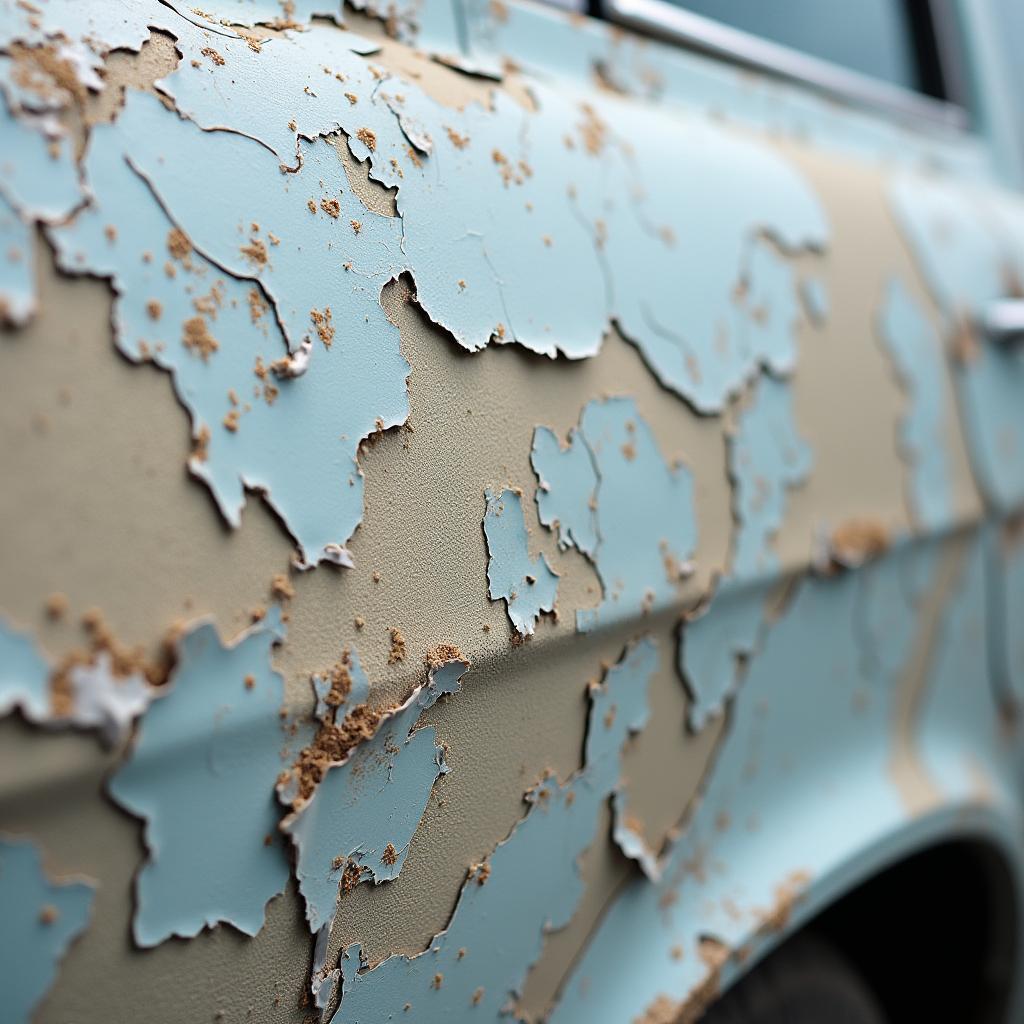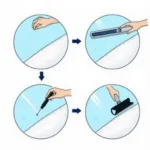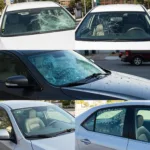Car paint peeling can be a frustrating sight for any car owner. It not only affects the aesthetics of your vehicle but can also hint at underlying issues that need attention. This comprehensive guide will delve into the common causes of peeling car paint, how to address the problem, and effective preventive measures to keep your car looking its best.
Understanding Why Car Paint Peels
Before we jump into solutions, it’s crucial to understand why car paint peels in the first place. Peeling paint is often a symptom of various factors, some environmental and others related to the paint job itself. Here’s a closer look:
- UV Radiation: Prolonged exposure to the sun’s harmful ultraviolet (UV) rays can gradually break down the chemical bonds in your car’s paint, causing it to become brittle and eventually peel.
- Oxidation: When paint is exposed to oxygen and moisture over time, it undergoes a chemical reaction called oxidation. This process can lead to paint fading, chalking, and ultimately, peeling.
- Improper Washing Techniques: Harsh detergents and abrasive cleaning tools can strip away the protective clear coat on your car’s paint, making it more susceptible to damage and peeling.
- Environmental Factors: Bird droppings, tree sap, acid rain, and road salt can all damage your car’s paint if not removed promptly. These substances can etch into the paint, weakening it and making it prone to peeling.
- Poor Paint Job: A rushed or improperly applied paint job is a prime culprit for peeling. If the surface wasn’t prepared correctly, such as neglecting to remove rust or old paint, the new paint won’t adhere properly and will likely peel over time.
Can You Fix Peeling Car Paint Yourself?
The answer to this question depends on the severity of the peeling. For minor peeling, a DIY approach might be feasible. However, for extensive damage or if the peeling reveals rust underneath, it’s best to consult a professional auto body shop.
how to repair paint peeling on car
DIY Repair for Minor Peeling
Materials You’ll Need:
- Automotive soap and water
- Microfiber cloths
- Sandpaper (220-grit, 320-grit, 400-grit)
- Primer
- Touch-up paint (matching your car’s color)
- Automotive clear coat
- Masking tape and paper
- Rubbing compound
- Polishing compound
Step-by-Step Guide:
- Clean the Area: Thoroughly wash the affected area with automotive soap and water, ensuring it’s free of dirt and debris.
- Sand the Peeling Paint: Using 220-grit sandpaper, gently sand the peeling edges until you reach a smooth, even surface. Gradually move to finer grits (320 and 400) to feather out the edges and create a seamless transition.
- Clean and Mask: Clean the area again to remove sanding dust. Then, use masking tape and paper to protect surrounding areas that you don’t want to paint.
- Prime the Surface: Apply a thin coat of primer to the sanded area, allowing it to dry completely according to the manufacturer’s instructions.
- Apply Touch-Up Paint: Carefully apply thin coats of touch-up paint, allowing each coat to dry before applying the next. Aim for a smooth, even finish that blends with the surrounding paint.
- Apply Clear Coat: Once the touch-up paint is dry, apply a clear coat to protect it and provide a glossy finish. Follow the recommended drying time.
- Wet Sand and Polish: After the clear coat cures, use fine-grit sandpaper (1000-grit or higher) and soapy water to wet sand the area gently. This will remove any imperfections and create a smooth surface. Follow with rubbing compound and then polishing compound to restore the shine.
When to Call a Professional
While DIY repairs can be effective for minor peeling, more severe cases are best left to the experts. Here’s when you should consider professional help:
- Extensive Peeling: If a significant portion of your car’s paint is peeling, it’s a sign of a deeper issue that requires professional attention.
- Rust Damage: If you see rust underneath the peeling paint, it indicates a more serious problem that needs immediate attention to prevent further corrosion.
- Lack of Experience: If you’re not comfortable with the DIY process or lack experience with car paint repair, it’s always wise to seek professional help to avoid potentially worsening the damage.
Preventing Car Paint Peeling
Prevention is always better than cure. By taking proactive steps, you can significantly reduce the risk of car paint peeling:
- Regular Washing: Wash your car regularly, especially after driving in harsh weather conditions. Use a pH-neutral car wash soap and microfiber cloths to avoid scratching the paint.
- Waxing: Applying a high-quality car wax every few months creates a protective layer over your car’s paint, shielding it from UV rays, contaminants, and minor scratches.
- Covered Parking: Whenever possible, park your car in a garage or under a carport to minimize exposure to direct sunlight, rain, and other damaging elements.
[how to repair peeling car paint](https://carrepairon.com/how to-repair-peeling-car-paint/)
Expert Insights
John Smith, Automotive Paint Specialist at XYZ Auto Body:
“One of the most common mistakes I see car owners make is using household cleaning products on their car’s paint. These products are too harsh and can strip away the protective layers, making the paint more vulnerable to damage.”
Jane Doe, Senior Technician at ABC Auto Repair:
“Prevention is key when it comes to car paint care. Regular washing, waxing, and protecting your car from the elements can go a long way in preventing paint peeling and maintaining your car’s appearance.”
car paint lacquer peeling repair
Repair Car Paint Peeling and Keep Your Car Looking Its Best
Peeling car paint is a common problem that can be addressed with the right approach. By understanding the causes, preventive measures, and repair options, you can keep your car looking its best for years to come. While DIY solutions can work for minor peeling, don’t hesitate to consult a professional for more significant issues or if you’re unsure about the repair process.
Remember, a well-maintained car not only looks great but also retains its value better over time.



